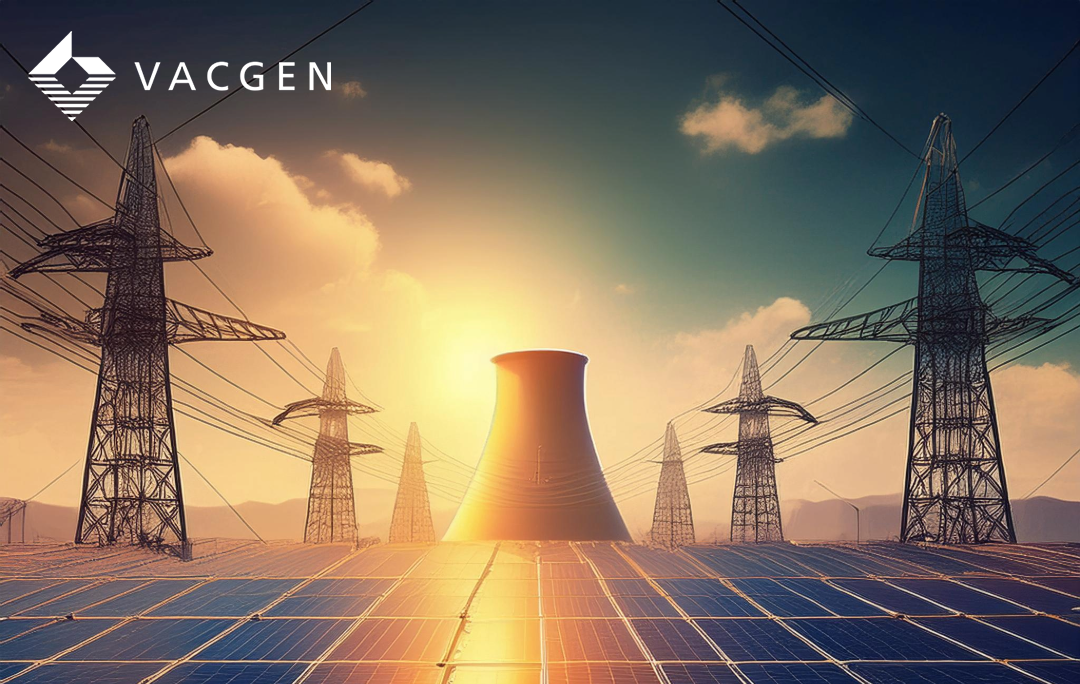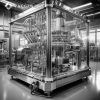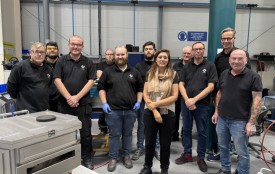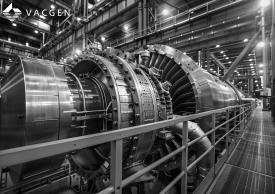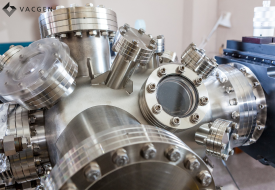Nuclear clean energy needs vacuum for controlled environments, efficiency in reactions and safety in nuclear fusion and fission technologies.
Here’s why vacuum is important and the main vacuum components required:
Importance of Vacuum in Nuclear Clean Energy
1. Plasma Containment in Fusion:
- High-Temperature Plasma: Nuclear fusion, which powers the sun, requires extremely high temperatures (millions of degrees) to fuse atomic nuclei. A vacuum environment is essential to create and maintain this hot plasma without interference from air molecules.
- Reducing Contamination: A vacuum reduces the likelihood of plasma contamination by other particles, ensuring a purer and more efficient fusion reaction.
2. Preventing Corrosion and Contamination:
- Reactor Materials Protection:Vacuum environments prevents oxidation and other chemical reactions that could corrode reactor components, prolonging their lifespan and reliability.
- Purity Maintenance:In both fusion and fission, maintaining a vacuum helps keep the process gases pure, which is crucial for reactor efficiency.
3. Safety and Control:
- Radiation Containment: Vacuum systems are used to prevent the escape of radioactive particles, enhancing the safety of nuclear reactors.
- Controlled Reaction Environment: A vacuum allows precise control over reaction conditions, such as pressure and temperature, which is necessary for stable nuclear reactions.
4. Heat Transfer and Insulation
- Thermal Insulation: In some nuclear systems, vacuum serves as an insulating layer, minimising heat loss and maintaining the high temperatures required for nuclear reactions.
- Cooling Systems: In fusion reactors, vacuum is critical in cryogenic systems that cool superconducting magnets, necessary for plasma confinement.
The Main Vacuum Components Required:
- These are large, sealed containers where the vacuum environment is maintained. They house the plasma or reactor components. The chambers are typically made from stainless steel or other materials resistant to radiation and high temperatures.
- These gauges measure the pressure within the vacuum chamber, ensuring that the correct vacuum level is maintained. Common types include ionization gauges and Pirani gauges.
- Valves control the flow of gases in and out of the vacuum system. They are crucial for isolating different parts of the system and for maintaining the vacuum. These include gate valves, ball valves, and butterfly valves, all designed to operate in high-vacuum environments. At VACGEN we also supply specialist valves used for the enrichment of Uranium.
- These allow electrical, optical, or mechanical connections to pass into the vacuum chamber without breaking the vacuum. They are used for transmitting power, signals, or fluids into the vacuum chamber.
5. Magnetic Confinement Devices (in Fusion):
- While not a vacuum component per se, devices like tokamaks rely on a vacuum environment to confine plasma using magnetic fields, preventing it from touching the reactor walls.
6. Leak Detection Systems:
- These systems detect and locate leaks in the vacuum chamber, which is critical for maintaining the integrity of the vacuum. Helium mass spectrometers are commonly used for leak detection.
7. Vacuum Pumps:
- Includes turbomolecular pumps, cryopumps, and diffusion pumps. These pumps remove air and other gases from the vacuum chamber to achieve and maintain the required vacuum levels.
Summary
Vacuum is crucial in nuclear clean energy for ensuring optimal reaction conditions, safety, and efficiency. The main vacuum components include vacuum chambers, pumps, gauges, valves, and cryogenic systems, each playing a critical role in maintaining the necessary environment for nuclear reactions, especially in fusion energy systems.
Get in contact with us today to find out how VACGEN can help you: sales@vacgen.com

